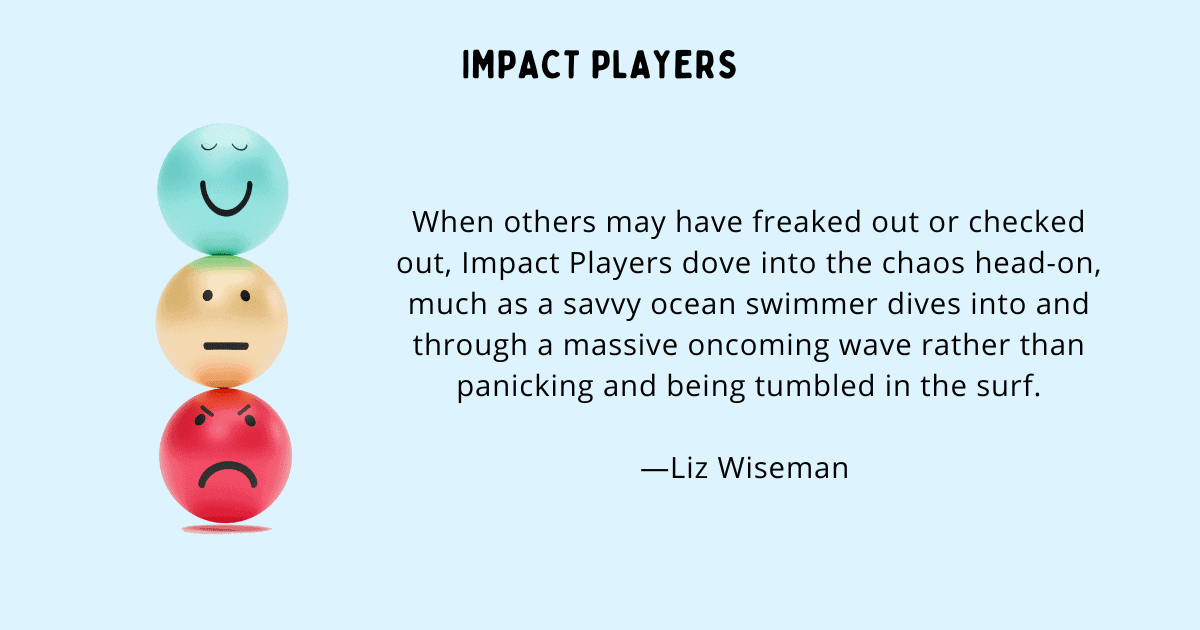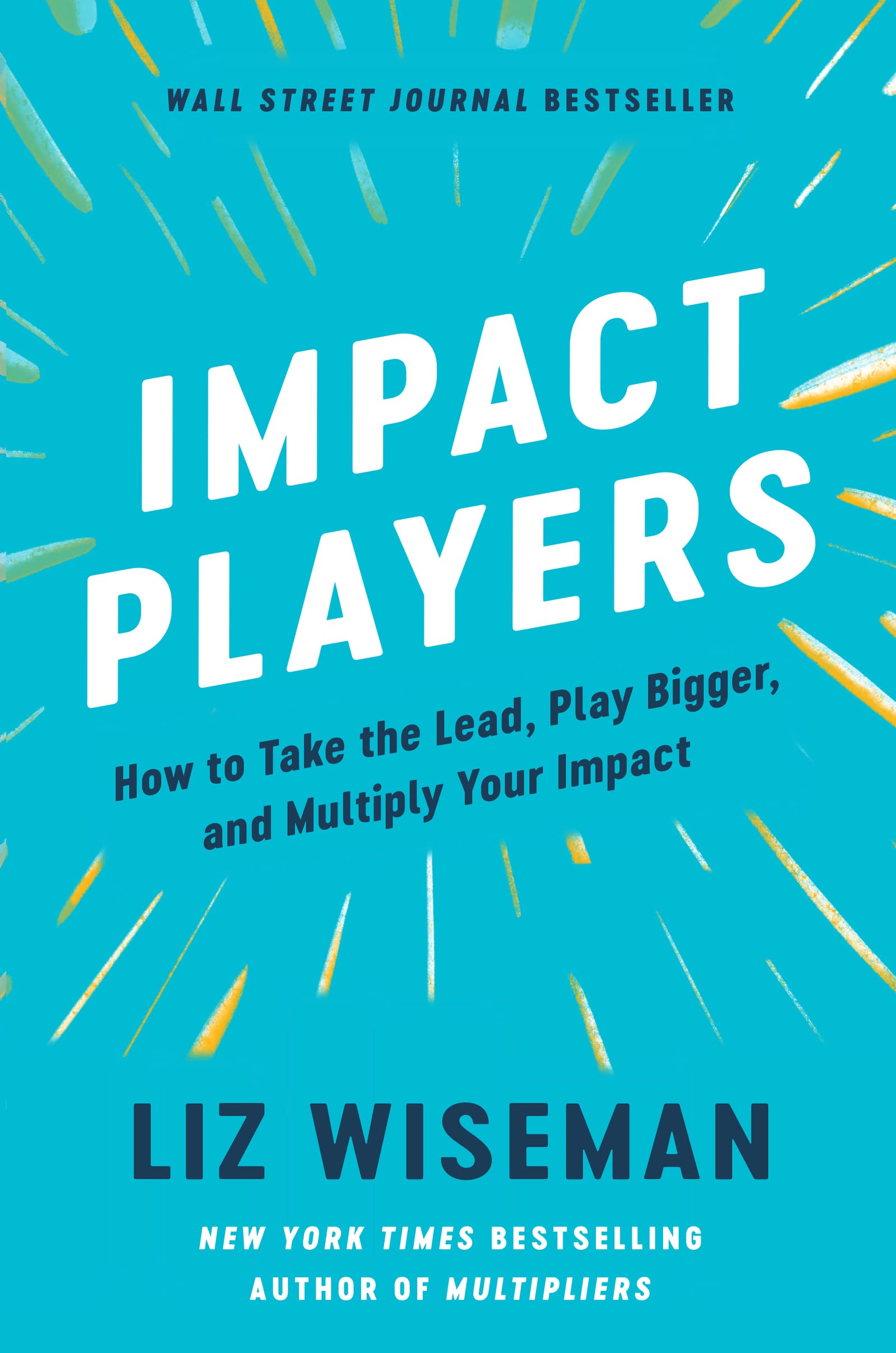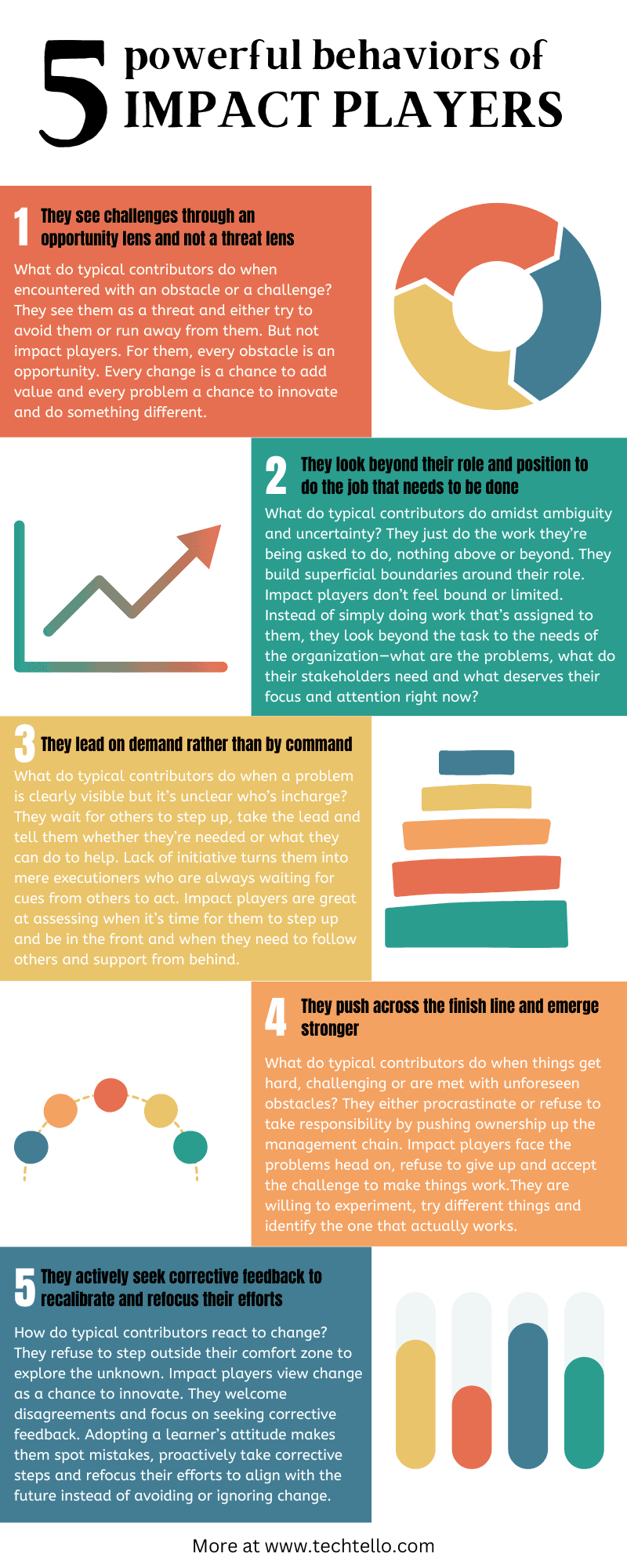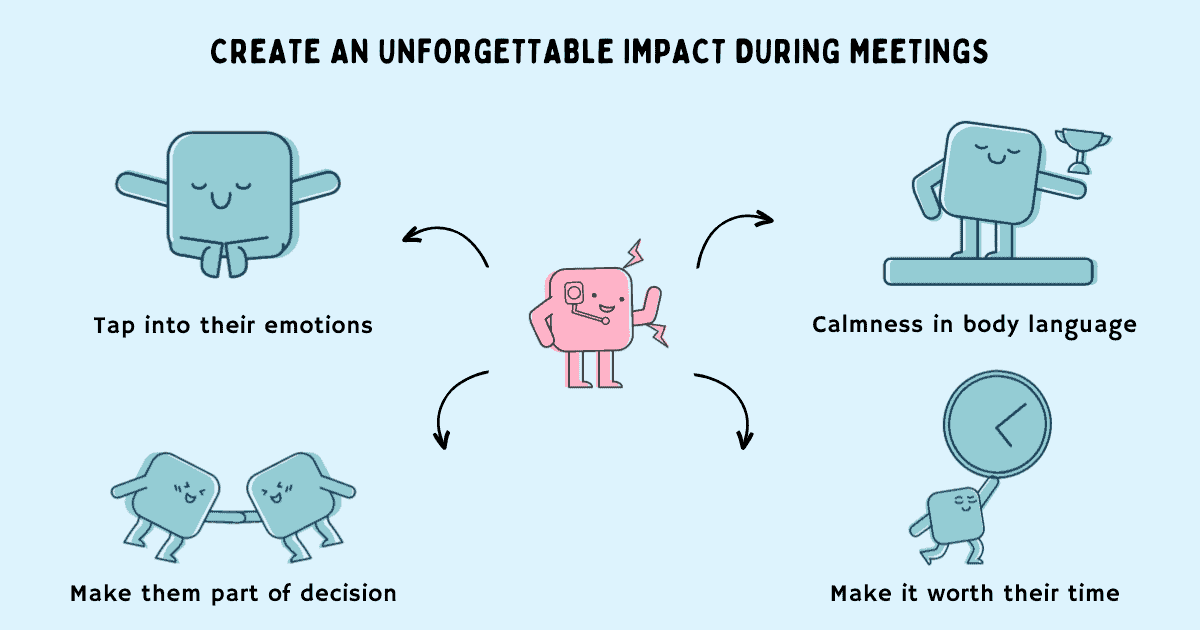Master These 5 Behaviors to be an Impact Player

What makes some employees rise through challenges, tap into opportunities, find a way to break through and make an impact while others are taken aback by a difficult circumstance and don’t know what to do or how to move forward?
Are they more talented?
Do they have better skills?
Do they just work harder than everyone else?
In her book Impact Players, Liz Wiseman describes three types of people on the team:
- High-impact contributors: Those who are doing work of exceptional value and impact.
- Typical contributors: Smart, talented people who are doing solid (if not great) work.
- Under-contributors: Smart, talented people who are playing below their capability level.
She calls high-impact contributors as Impact Players—those who make a significant contribution individually but who also have an enormously positive effect on the entire team.
The difference between high impact contributors and typical contributors isn’t talent, competence or skills. They’re equally capable, have similar potential and the urge to do well. Yet, impact players consistently find ways to add value while others are simply going through the motions.
So what do impact players do differently that makes them influential and consistently deliver high results—especially in those crucial moments when unknown challenges, uncertainty or lack of clarity makes the job difficult. How do they step up and get the job done when others are in denial or perplexed by uncertainty and ambiguity?
It’s not their talent, but their mindset that differentiates them from others on a team. Liz Wiseman points out these 5 behaviors of impact players that makes them radically different from the rest.
5 powerful behaviors of impact players that sets them apart
They see challenges through an opportunity lens and not a threat lens
What do typical contributors do when encountered with an obstacle or a challenge? They see them as a threat and either try to avoid them or run away from them.
But not impact players.
For them, every obstacle is an opportunity. Every change is a chance to add value and every problem a chance to innovate and do something different.
They’re not intimidated by lack of clarity, ambiguity, uncertainty, change of direction or unforeseen obstacles and circumstances, rather they see them as an opportunity to take risks and do something different.
They work through the problem by asking:
- How can I make the most of this situation?
- How can I add value?
- What are the possibilities?
- What can I learn?
When others may have freaked out or checked out, Impact Players dove into the chaos head-on, much as a savvy ocean swimmer dives into and through a massive oncoming wave rather than panicking and being tumbled in the surf
—Liz Wiseman
They look beyond their role and position to do the job that needs to be done
What do typical contributors do amidst ambiguity and uncertainty?
They just do the work they’re being asked to do, nothing above or beyond. They build superficial boundaries around their role—what’s expected of them, what fits their job profile and what’s something they can never get done. Their tunnel vision keeps them tightly locked up to the limited nature of their job. They don’t lift their heads up to expand the boundary of their influence.
Impact players don’t feel bound or limited. Instead of simply doing work that’s assigned to them, they look beyond the task to the needs of the organization—what are the problems, what do their stakeholders need and what deserves their focus and attention right now?
Messy problems which are a regular part of work—more so if you work in complex environments—often have unwritten playbooks. Playing by the book may sometimes get the job done, but it can never create aha moments—addressing your stakeholders unmet needs, solutioning in a way that creates additional value or proactively solving long standing problems.
By doing the job that needs done, impact players create significant value for their organization and its people.
Amazing Goal Planner
Become your best self by setting and achieving goals in all important areas of your life.
They lead on demand rather than by command
What do typical contributors do when a problem is clearly visible but it’s unclear who’s incharge?
They wait for others to step up, take the lead and tell them whether they’re needed or what they can do to help. Lack of initiative turns them into mere executioners who are always waiting for cues from others to act.
Impact players are great at assessing when it’s time for them to step up and be in the front and when they need to follow others and support from behind. Taking initiative when no one else is willing to lead requires courage. It requires accurately judging the need of the hour, reconsidering priorities and making adjustments. It requires maximizing time spent on goals that are aligned with the company’s mission and vision.
Such decisions are often not easy to make. They try to determine what needs to be done by asking these questions:
- What does this situation demand?
- How important is it right now?
- Who’s leading? Who’s in charge?
- What does the organization need me to do right now?
- How can I take a small step? How can I get started?
- Who else can help?
Their willingness to both lead and follow creates a culture of courage, initiative, and agility inside their organization
—Liz Wiseman
They push across the finish line and emerge stronger
What do typical contributors do when things get hard, challenging or are met with unforeseen obstacles?
They either procrastinate putting things off or delay taking action until it’s too late or give up without completing the job or refuse to take responsibility by pushing ownership up the management chain. Escalation being the easiest choice becomes their default strategy when nothing else seems to work.
Impact players don’t operate this way. They face the problems head on, refuse to give up and accept the challenge to make things work. Not being stuck with a certain way of doing things gives them permission to experiment, try different things and identify the one that actually works.
The difference between the dreamers and the achievers is often the possession of one simple quality…persistence
—Michael ONeill, Road Work
Exercising their high agency in such moments makes them find a way where others thought was impossible. Facing challenges with the mindset to solve problems, adopting the attitude of a learner and improvising along the way not only gets the job done, it builds confidence and strength.
They actively seek corrective feedback to recalibrate and refocus their efforts
How do typical contributors react to change?
They stick to the way things have always been done before. They refuse to step outside their comfort zone to explore the unknown. Playing by the old rules keeps them safe but it also prevents them from learning and moving forward. They fail to adapt. Interpreting change as a threat makes them lose sight of valuable opportunities.
Impact players view change as a chance to innovate. They align their contributions with the future needs of the organization and not what feels safe. Stepping into the unknown, taking risks, learning and adapting to change is what keeps the organization thriving. It is what leads to value creation and growth.
Impact players also understand that they’re not free from cognitive biases and other limitations of the mind. They don’t make perfect decisions nor have all the information. This makes them welcome disagreements and focus on seeking corrective feedback. Adopting a learner’s attitude makes them spot mistakes, proactively take corrective steps and refocus their efforts to align with the future instead of avoiding or ignoring change.
They do this by asking these questions:
- Is this change important for the organization? Why?
- What’s the cost of ignoring it?
- What benefits or value addition will it bring?
- How can I contribute?
- Who can give me feedback?
- Based on everything I have learnt, what changes do we need to make?
Feedback turns good into better and better into best.
—Frank Sonnenberg, Listen to Your Conscience
Summary
- Impact players are employees who consistently outperform others and create significant value for the organization. What sets them apart is their mindset, not their talent.
- While typical contributors try to avoid a challenge, impact players embrace challenges and turn them into opportunities.
- Typical contributors do the work that’s assigned to them, while impact players look out for the needs of the organization and do work that adds value.
- When it’s unclear who’s in charge, typical contributors wait for someone to take the lead and give them direction. Impact players on the other hand step up, take the lead and guide the team through ups and downs.
- When things get hard, typical contributors either give up or refuse to take responsibility. Impact players persist by trying new strategies, experimenting, learning and adapting along the way.
- Typical contributors react to change by playing safe while impact players use change as an opportunity to align their contributions with the future needs of the organization.






























